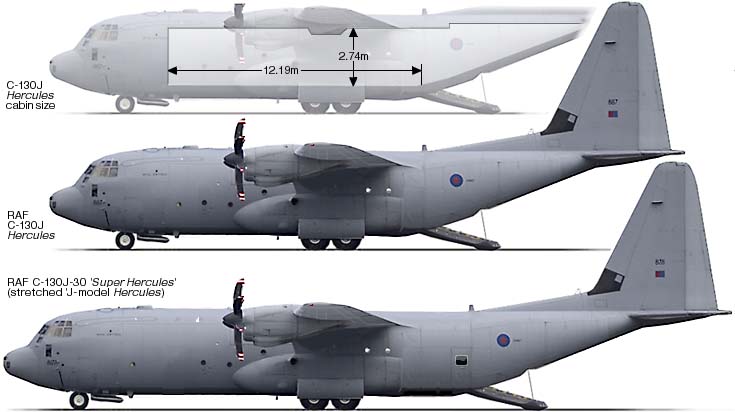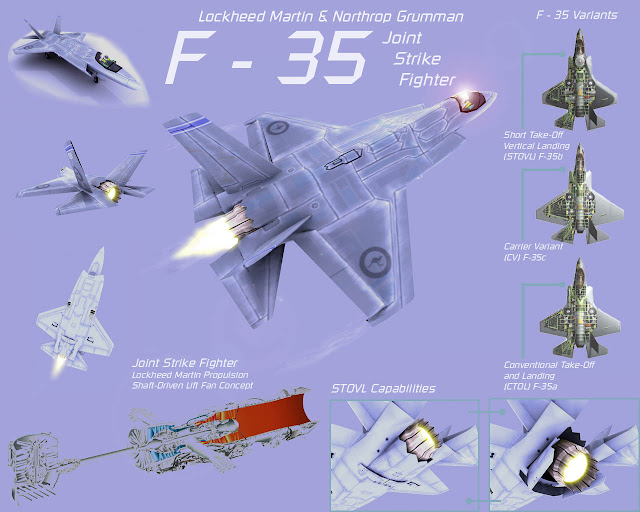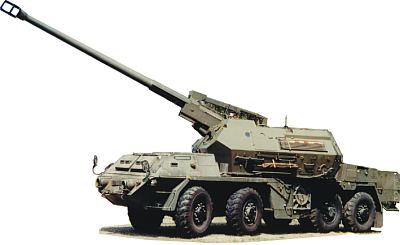SOURCE FLIGHT INTERNATIONAL An air show on the scale of next week's
Aero India is bound to throw up surprises, but one certainty is a massive push by the six contenders in India's pivotal medium multi-role combat aircraft (MMRCA) competition.
Delegations from Boeing, Dassault, Eurofighter, Lockheed Martin, RSK MiG and Saab will number in the dozens, if not hundreds, and no expense will be spared on chalets, booths, flight simulators and pricey flight demonstrations.
It is hard to overstate the importance of the $10 billion MMRCA competition. With an order of 126 fighters on the cards, and likely follow-on orders, the winning programme could see its life extended well into the next decade. As for the losers, most will end their production runs in the middle of the decade as the world's major air forces enter the era of the Lockheed Martin F-35 Lightning II.
 |
© Lockheed MartinLockheed Martin's F-16IN Super Viper has set its sights on India's MMRCA contest |
The contenders are diverse. US airframer Boeing is offering its F/A-18E/F Super Hornet, and arch-rival Lockheed Martin the F-16IN Super Viper - essentially an F-16 Block 60. Sweden's Saab has the Gripen IN, Dassault is seeking its first foreign order for the Rafale, Eurofighter is pitching the Typhoon, and Russia is offering the RSK MiG-35.
Indian prime minister Manmohan Singh's recent appointment diary underlines the stakes. Foreign leaders including UK prime minister David Cameron, French president Nicholas Sarkozy, Russian president Dmitry Medvedev and US president Barack Obama have all trooped to New Delhi recently, intent on building business and defence ties with the subcontinental superpower.
No winner will be announced at the show, however - a shortlist is due to be drawn up in April or May, although some reports suggest this could be delayed until later in the year.
"All the technical evaluations are done," says an industry source. "The next stage will be a downselect some time after the Aero India show. This will determine which aircraft go into contract negotiations."
An already tight and fiercely fought competition could get even messier, however. Another source says there is no fixed number of aircraft for the downselect, and that all six aircraft types could, in theory, advance to the contract negotiation stage. "After Aero India, they will open the commercial envelopes and see who is cheapest," says one executive involved in the competition.
TESTING DEMANDS
The evaluation process has been long and arduous. An initial tender stipulated 660 requirements, and the first proposals issued by the airframers ran to 5,000-6,000 pages each. Comprehensive field tests of each aircraft were then undertaken, including flying the aircraft - borrowed from various air forces - to India at the manufacturers' expense.
There they were subjected to batteries of tests reflecting India's varied geography of tropical, desert and mountainous regions. Tests took place at Bangalore (a tropical region), Jaisalmer (desert) and the Himalayan air base of Leh, said to be the highest operational air base in the world.
"We spent quite a lot on the tests with no guarantee of a sale," says another executive involved in the race. "That said, the air force got a very good impression of all the aircraft."
As with any competition on such a scale, the merits of aircraft alone will not determine the winner. Politics will play a part, and that could hurt Boeing and Lockheed.
India's defence ties with the USA are improving rapidly. Long gone are the Cold War days of frosty relations between the two nations, or the chilly ties after India's nuclear tests in 1998. In response to India's help in the war on terror, the then-US president George Bush lifted sanctions in the mid-2000s. In 2008, India purchased six C-130J Hercules aircraft from Lockheed and is considering six more. It has also signed up for eight Boeing P-8I Poseidons and has committed to ordering 10 C-17 strategic transports.
But although impressive in themselves, these orders are small compared with the MMRCA contract. In addition, India's military has not forgotten the sanctions Washington imposed after the 1998 nuclear tests.
One former member of the Indian navy was a junior officer and helicopter pilot at the time of the sanctions. "The US sanctions made a strong impression on us," he says. "They penetrated very deeply. At that time, we had sent some helicopter gearboxes to the UK for repair, but these repairs ceased with the sanctions, and it hurt our operational readiness."
"Operational sovereignty" is a phrase often heard among Indian defence pundits. Although the USA and India have reportedly agreed on the language of an end-use agreement, India has yet to sign the Communications Interoperability and Security Memorandum of Agreement (CISMOA). In theory, this could see key technologies excluded from any F-16 or F/A-18 purchase.
RELATIONSHIP DYNAMICS
Teal Group analyst Joel Johnson says: "If the Indians want access to top-level US weapons systems, and given that the USA wants to deepen its defence relationship with India, then an agreement will be reached that satisfies US security concerns and lets India save face. The CISMOA could well get another name, but it will in fact be a CISMOA."
Also, many commentators say that although the US vendors make much of interoperability, some Indians see it as an impingement on sovereignty.
"India has its own systems and is proud of them," says one industry source close to the race. "The country is unique, and templates that apply elsewhere simply don't apply there." The source points out that India initiated the Non-Aligned Movement of nations in 1954. "India prides its sovereignty," he adds.
Indeed, Eurofighter and Saab executives stress the operational independence they feel their respective products offer.
On the other hand, both US aircraft have performed well in combat. In terms of joint exercises and training, Indian air force pilots will have the most opportunity to train with pilots from the US Navy, which operates F/A-18s from aircraft carriers that are often on station in the Arabian Sea.
As Teal Group analyst Richard Aboulafia points out, the Super Hornet comes with the Raytheon APG-79 active electronically scanned array (AESA) radar. Although other aircraft being pitched have AESA radars, the APG-79 is used by the US Navy, providing an excellent long-term upgrade programme.
Of all the contenders, the MiG-35, essentially an updated MiG-29, is seen as the outsider. Although India has been a long-time buyer of Russian arms, it is now inducting a large fleet of Sukhoi Su-30MKIs in the heavy fighter category. State-owned Hindustan Aeronautics has built about 100 of a total order of 180 Su-30s, and expects a deal for 42 more.
India also bought 40 Su-30s from Russia as flyaways in 2010. Over-reliance on Russian aircraft hurt the Indian air force's operational readiness in the early 1990s when the Soviet Union collapsed, choking vital spares for India's vast fleet of MiGs.
Apart from aircraft performance capabilities, another crucial element in the MMRCA competition is the offset package. Typically, India seeks offsets of 30% for defence programmes, but for high-value programmes such as this, the figure is 50% as India targets job creation and technology transfer. Only 18 aircraft will come as flyaways, with the remaining 108 produced by HAL.
HAL chairman Ashok Nayak says development of the production capacity required to produce the eventual MMRCA winner is already under way.
"We will have to set up new infrastructure for this," he says. "It will not happen in one of our existing factories, but hopefully will still be in Bangalore." He estimates Hindustan Aeronautics alone will employ 3,500 workers to produce the MMRCA, and it will take about three years to set up the facility.
Hinting at frustration, several MMRCA contenders say the rules governing offsets in India are something of a moving target. Offset rules continue to evolve, mainly because of changing and evolving technologies. Technology transfer is, of course, a critical aspect of the MMRCA competition. One peculiarity, say some race contenders, is that the offsets apply only to the defence sector, rather than the broader aerospace industry.
NEW TO OFFSETS
"They are very new to offsets," says one industry source, who tells the story of one Indian defence specialist relishing the idea of $30 billion in MMRCA offsets. "I reminded him that there will be only $5 billion in offsets, as there can be only one winner. Some of them see the offsets as free money."
Naturally enough, the various suppliers are reluctant to discuss intricate details of their bids, although all insist they comply with India's offset requirements. India's defence ministry is also tight-lipped on how the different aircraft and their offset packages are faring at the evaluation stage. Whatever India's final decision is, the aviation world is unlikely to see a repeat of the two-decade procurement saga of India's BAE Systems Hawk.
Vivek Lall, Boeing's country head for defence, space and security, says the P-8I deal took just two and a half years from India's request for proposals to a decision to purchase the aircraft. "There is a paradigm shift here in terms of embracing technology, and what the world has to offer," says Lall.
Conversations at Aero India 2011 will, inevitably, turn to the MMRCA battle, the biggest jet fighter export deal in history. A heady mix of fighter performance, weapons, technology, offsets, politics and luck will decide which aircraft move on to the next round. All this in a fervid Indian media environment, with reporters desperate to generate "scoops" about the competition.
THE CONTENDERS
 |  |  |
© Rick Colls/Rex Features | © Boeing | © Lockheed Martin |
 |  |  |
© Saab | © Mikoyan | © Sipa Press/Rex Features |
Clockwise from top left, Eurofighter Typhoon, Boeing F/A-18E, Lockheed Martin F-16IN, Dassault Rafale, Mikoyan MiG-35, Saab Gripen NG |
- Lockheed Martin F-16IN Super Viper
Essentially an F-16 Block 60, the F-16IN is one of two single-engined aircraft in the competition. Powered by the General Electric F110-132A, the F-16IN has a Northrop Grumman APG-80 AESA radar. Lockheed Martin makes much of its combat record: more than 100,000 missions flown, and a 72-0 record in air-to-air victories.
Given that more than 4,000 units have been built, ramping up production would not be a problem - 928 F-16s have been produced by licence partners. F-16 variants are also flown by India's arch rival, Pakistan.
The Rafale has yet to win orders outside France, but its single-engined predecessor, the Mirage 2000, reportedly performed well for India in the high-altitude Kargil conflict with Pakistan in 1999. In French service the Rafale has been successful in Afghanistan.
- Boeing F/A-18E/F Super Hornet
In late October, Boeing said it was optimistic of making the MMRCA shortlist. One possible point in the Super Hornet's favour is its General Electric F414 engine, which will also power the indigenously developed Mk II version of India's Tejas light combat aircraft.
Boeing has offered India its Super Hornet International Road Map, which includes conformal fuel tanks, an enclosed weapons pod and other systems.
The Gripen IN is essentially the Gripen NG, a successor to the Gripen C/D used by the air forces of Sweden, the Czech Republic, Hungary and South Africa.
As with the Super Hornet, the Gripen IN will use a GE F414, potentially creating synergies with the Tejas Mk II. Interestingly, the original Gripen was designed to operate from roads with basic logistics support, under the assumption that in an invasion by a "larger neighbour", the Swedish air force would not have access to airfields.
Saab plays up the affordability of single-engined fighters, its complete openness to technology transfer, and Sweden's practical, common-sense design traditions.
"Enthusiastic support" for the Indian government's 50% offset target and technology transfer ambitions are a cornerstone of the Eurofighter bid, says consortium member BAE Systems.
Eurofighter touts the Typhoon's "swing-role" capabilities, which enable the aircraft to perform simultaneous air-to-air and air-to-surface missions. It is also actively wooing India as a full partner in the programme. With that status, India would take a share of future Typhoon sales.
Formerly known as the MiG-29OVT, the MiG-35 is touted as a generation 4++ multirole fighter. It can carry a weapons load on nine external stations and is also configurable for use as a tanker.
"Upon customer request, the fighters can be equipped with all-aspect thrust-vectored RD-33MK engines, ensuring superiority in a manoeuvring dogfight," says RSK.
India has been a long-time buyer of Russian aircraft. Many observers see the MiG-35 as an outsider because the Indian air force already operates a number of Russian types, including the Sukhoi Su-30MKI at the heavy end of the fighter spectrum.








 BENGALURU, India — India’s Embraer-built Airborne Early Warning & Control System (AEW&C) is scheduled for rollout Feb. 21 in Brazil.
BENGALURU, India — India’s Embraer-built Airborne Early Warning & Control System (AEW&C) is scheduled for rollout Feb. 21 in Brazil.




 Management at Czech Sport Aircraft (CSA) agrees with Piper Aircraft that “differences in business philosophies” led to the demise of its partnership to market the PiperSport light-sport aircraft (BA, Jan. 17/3). But the Czech Republic-based company maintains that the program is continuing to move ahead without the partnership.
Management at Czech Sport Aircraft (CSA) agrees with Piper Aircraft that “differences in business philosophies” led to the demise of its partnership to market the PiperSport light-sport aircraft (BA, Jan. 17/3). But the Czech Republic-based company maintains that the program is continuing to move ahead without the partnership.